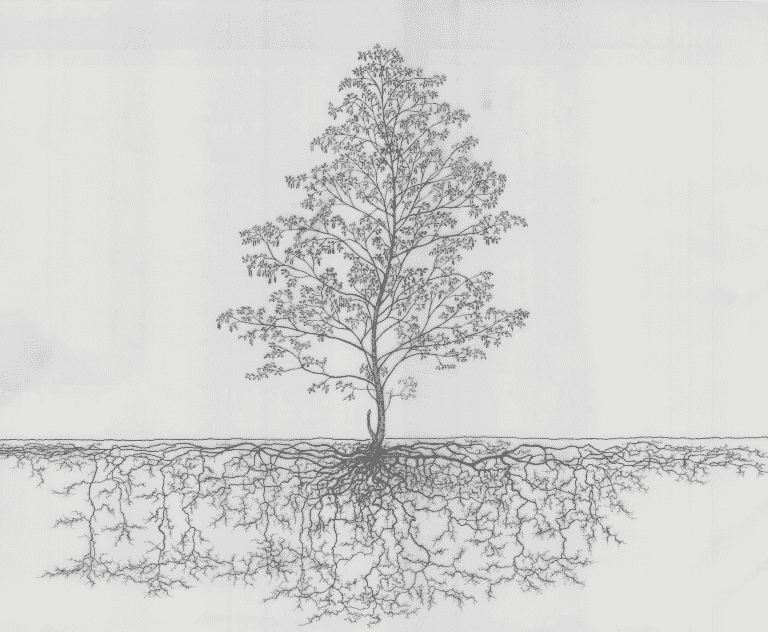Math books made me a huge believer in mathematics! Math shouldn’t be only accessible for only math students because mathematics has a huge potential to be wildly interesting to anyone. If we can find the right apparatus, then we can show the beauty of mathematics to anyone in this world.
But, what can we use to make people love mathematics? I think the notorious pi is the best candidate to start showing the beauty of mathematics, and it has so many interesting properties to make people amazed.
Reading Math Books is the Best Way to Learn Mathematics!
But, where should you start learning about pi? The answer is obvious; you should get the right books! Here, I have curated 7 utterly well-written math books about pi for you! Each of these books will make you love mathematics! I you enjoy reading them.
- A History of Pi by Petr Beckmann
- How to Bake Pi by Eugenia Cheng
- Humble Pi: When Math Goes Wrong in the Real World by Matt Parker
- Mandelbrot the Magnificent: A Novella by Liz Ziemska
- Pi: A Biography of the World’s Most Mysterious Number by Alfred S. Posamentier
- Sir Cumference and the First Round Table: A Math Adventure by Cindy Neuschwander
- The Joy of Pi by David Blatner
- Other Interesting Sources for Pi
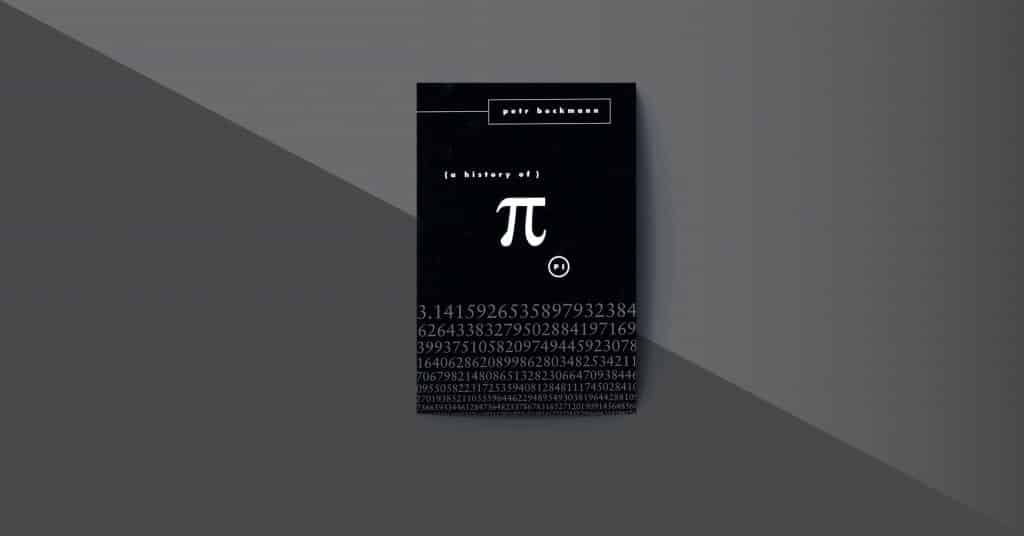
A History of Pi by Petr Beckmann
The history of pi, says the author, though a small part of the history of mathematics, is nevertheless a mirror of the history of man. Petr Beckmann holds up this mirror, giving the background of when pi made progress — and when it did not, because science was being stifled by militarism or religious fanaticism. This book is one of the best math books about pi.
“The history of pi is only a small part of the history of mathematics, which itself is but a mirror of the history of man. That history is full of patterns and tendencies whose frequency and similarity is too striking to be dismissed as accidental. Like the laws of quantum mechanics, and in the final analysis, of all nature, the laws of history are evidently statistical in character. But what those laws are, nobody knows. Only a few scraps are evident. And of these is that the Heisels of Cleveland are more numerous than the Archimedes of Syracuse.” ― Petr Beckmann, A History of π
How to Bake Pi by Eugenia Cheng
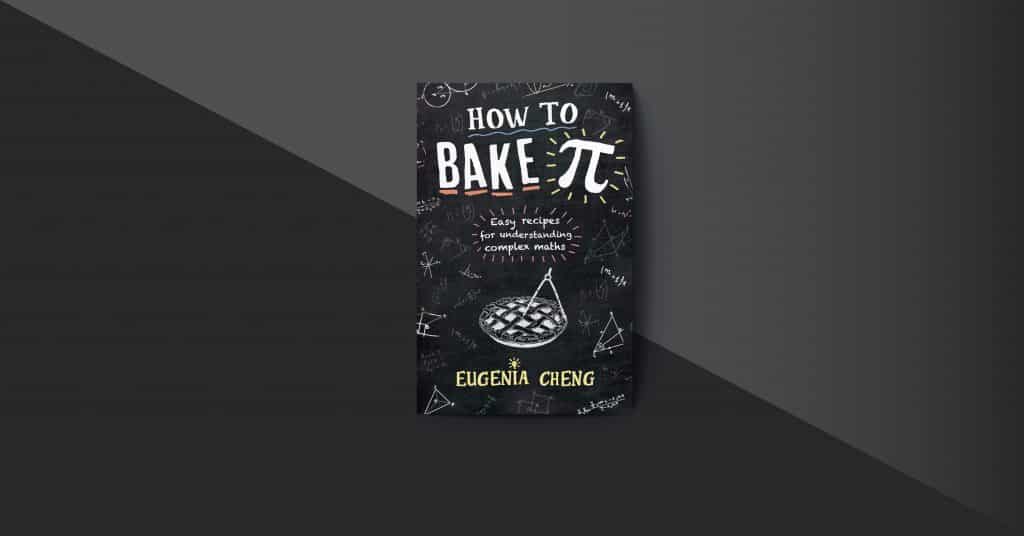
What is math? How exactly does it work? And what do three siblings trying to share a cake have to do with it? In How to Bake Pi, math professor Eugenia Cheng provides an accessible introduction to the logic and beauty of mathematics, powered, unexpectedly, by insights from the kitchen: we learn, for example, how the béamel in a lasagna can be a lot like the number 5, and why making a good custard proves that math is easy, but life is hard.
Of course, it’s not all about cooking; we’ll also run the New York and Chicago marathons, take a closer look at St. Paul’s Cathedral, pay visits to Cinderella and Lewis Carroll, and even get to the bottom of why we think of a tomato as a vegetable.
At the heart of it all is Cheng’s work on category theory, a cutting-edge “mathematics of mathematics” about figuring out how math works. This is not the math of our high school classes seen through category theory; mathematics becomes less about numbers and formulas and more about how we know, believe, and understand anything, including whether our brother took too much cake.
Many of us think that math is hard, but, as Cheng clarifies, math is designed to make complicated things more straightforward. Combined with her infectious enthusiasm for cooking and a true zest for life, Cheng’s perspective on math becomes this singular book: a funny, lively, and clear journey through a vast territory no popular book on math has explored before. How to Bake Pi offers a whole new way to think about a field all of us think we know; it will both dazzle the constant reader of popular mathematics and amuse and enlighten even the most hardened math-phobe.
“At school, if you write 10+4=2 you will be told that is wrong, but actually that's correct in some circumstances, such as telling the time - four hours later than 10 o'clock is indeed 2 o'clock. ― Eugenia Cheng, How to Bake Pi: An Edible Exploration of the Mathematics of Mathematics
Humble Pi: When Math Goes Wrong in the Real World by Matt Parker
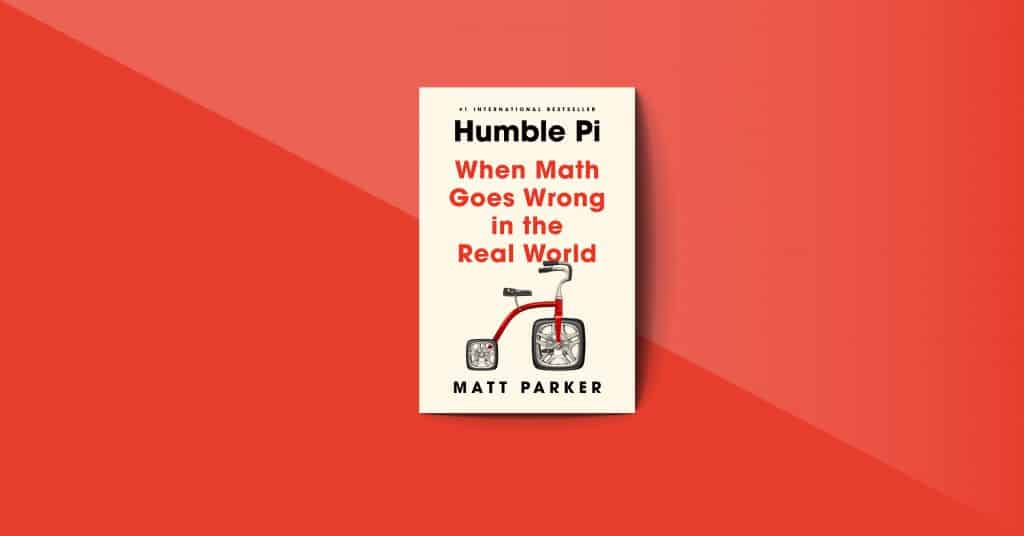
Our whole world is built on math, from the code running a website to the equations enabling the design of skyscrapers and bridges. Most of the time, this math works quietly behind the scenes until it doesn’t. All sorts of seemingly innocent mathematical mistakes can have significant consequences.
Math is easy to ignore until a misplaced decimal point upends the stock market, a unit Math is easy to ignore until a misplaced decimal point upends the stock market, a unit conversion error causes a plane to crash, or someone divides by zero and stalls a battleship in the middle of the ocean.
Exploring and explaining a litany of glitches, near misses, and mathematical mishaps involving Exploring and explaining a litany of glitches, near misses, and mathematical mishaps involving the internet, big data, street signs, lotteries, the Roman Empire, Matt Parker uncovers the bizarre ways math trips us up and what this reveals about its important place in our world. Getting it wrong has never been more fun.
“Even after a lifetime of education dealing with small numbers, there is a vestigial instinct that larger numbers are logarithmic; that the gap between a trillion and a billion feels about the same as the jump between a million and a billion—because both are a thousand times bigger. In reality, the jump to a trillion is much bigger: the difference between living to your early thirties and a time when humankind may no longer exist.” ― Matt Parker, Humble Pi: When Math Goes Wrong in the Real World
Mandelbrot the Magnificent: A Novella by Liz Ziemska

Mandelbrot the Magnificent is a stunning, magical pseudo-biography of Benoit Mandelbrot as he flees into deep mathematics to escape the rise of Hitler.
Born in Warsaw and growing up in France during the rise of Hitler, Benoit Mandelbrot found escape from the cruelties of the world around him through mathematics. Logic sometimes makes monsters, and Mandelbrot began hunting monsters early. Drawn into the infinite promulgations of formulae, he sinks into secret dimensions and unknown wonders.
His gifts do not make his life easier, however. As the Nazis give up the pretense of a puppet government in Vichy, France, the jealousy of Mandelbrot’s classmates leads to denunciation and disaster. The young mathematician must save his family with the secret spaces he’s discovered, or his genius will destroy them.
Everything I saw—the trees, the buildings, the hills surrounding the town—had an extra shimmer of possibility around it. How wonderful the world was, how full of mystery! Maybe today I would stop cowering in the back of the classroom. Maybe if I said something brilliant, Emile Vallat and his friends would overlook the shape of my face. Perhaps we could even start doing homework together. ― Liz Ziemska, Mandelbrot the Magnificent: A Novella
Pi: A Biography of the World’s Most Mysterious Number by Alfred S. Posamentier

We all learned that the ratio of the circumference of a circle to its diameter is called π and that the value of this algebraic symbol is roughly 3.14. We weren’t told, though, that behind this seemingly mundane fact is a world of mystery, which has fascinated mathematicians from ancient times to the present. Simply put, π is weird. Mathematicians call it a “transcendental number” because its value cannot be calculated by any combination of addition, subtraction, multiplication, division, and square root extraction.
In this delightful layperson’s introduction to one of math’s most interesting phenomena, Drs. Posamentier and Lehmann review pi’s history from prebiblical times to the 21st century, the many amusing and mind-boggling ways of estimating π over the centuries, quirky examples of obsessing about pi (including an attempt to legislate its exact value), and useful applications of pi in everyday life, including statistics. This enlightening and refreshing approach to mathematics will entertain lay readers while improving their mathematical literacy.
Somewhere in the past, after a wheel (or any truly circular object) was invented, the circumference was probably measured for the sake of comparison. Perhaps in the early days it was important to measure how far a wheel would travel in one revolution. This might have been done by rolling the wheel on the ground and marking off the distance it rolled in exactly one revolution (without slippage, of course) or with something resembling a string placed along it. The diameter, a much easier dimension to measure, since it merely required placing a straight stick or rule alongside it and marking off its length, was probably also noted. ― Alfred S. Posamentier, Pi: A Biography of the World's Most Mysterious Number
Sir Cumference and the First Round Table: A Math Adventure by Cindy Neuschwander
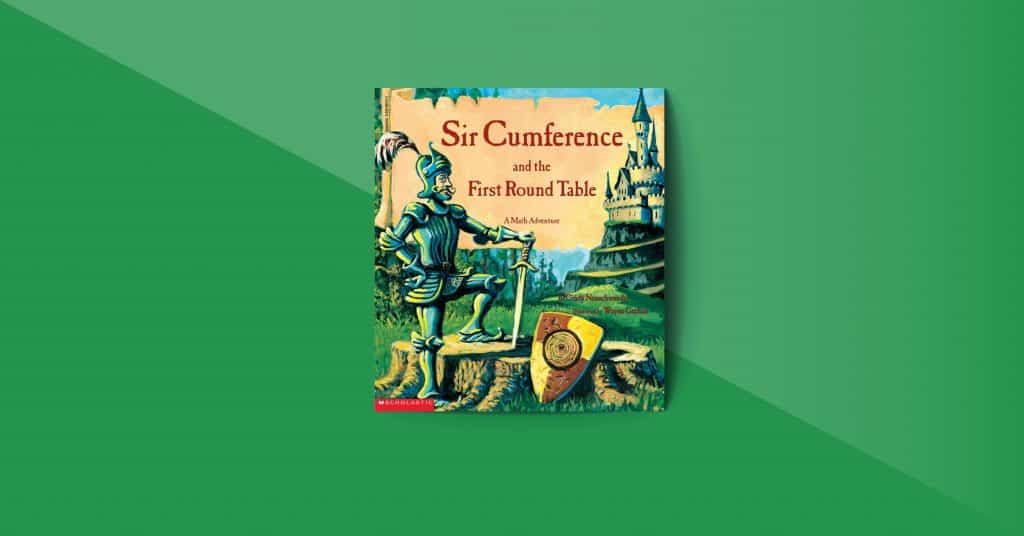
Sir Cumference, Lady Di of Ameter, and their son Radius for wordplay, puns, and problem solving in this geometry-packed math adventure. King Arthur was a good ruler, but now he needs a good ruler. What would you do if the neighboring kingdom were threatening war? Naturally, you’d call your strongest and bravest knights together to come up with a solution. But when your conference table causes more problems than the threat of your enemy, you need expert help.
Enter Sir Cumference, his wife Lady Di of Ameter, and their son Radius. With the help of the carpenter, Geo of Metry, this sharp-minded team designs the perfect table conducive to discussing the perfect peace plan. The first in Sir Cumference series, SIR CUMFERENCE AND THE FIRST ROUND TABLE, makes math fun and accessible for everyone.
The knights rode as fast as they could to the King's castle. Sir Cumference lived nearby, so his family came with him. Sir Cumference was married to Lady Di, who came from the town of Ameter. They had a son named Radius. Radius was very small and quite young, but his keen mind and boundless energy more than made up for what he lacked in height and age. - Cindy Neuschwander, Sir Cumference and the First Round Table: A Math Adventure
The Joy of Pi by David Blatner
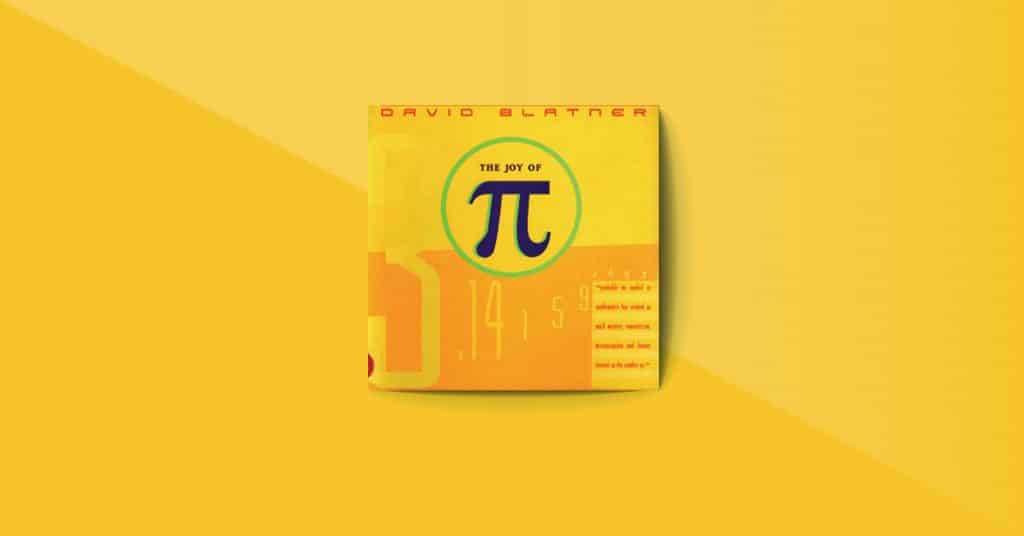
No number has captured the attention and imagination of people throughout the ages as much as the ratio of a circle’s circumference to its diameter. Pi–or ? as it is symbolically known–is infinite, and, in The Joy of pi, it proves to be infinitely intriguing. With incisive historical insight and a refreshing sense of humor, David Blatner explores the many facets of π and humankind’s fascination with it–from the ancient Egyptians and Archimedes to Leonardo da Vinci and the modern-day Chudnovsky brothers. They have calculated pi to eight billion digits with a homemade supercomputer.
The Joy of Pi is a book of many parts. Breezy narratives recount the history of π and the quirky stories of those obsessed with it. Sidebars document fascinating pi trivia (including a segment from the 0. J. Simpson trial). Dozens of snippets and factoids reveal pi’s remarkable impact over the centuries. Mnemonic devices teach how to memorize π to many hundreds of digits (or more, if you’re so inclined). Pi-inspired cartoons, poems, limericks, and jokes offer delightfully “square” pi humor. And, to satisfy even the most exacting of number jocks, the first one million digits of pi appear throughout the book.
A tribute to all things π, The Joy of pi is sure to foster a newfound affection and respect for the big number with the funny little symbol.
Other Interesting Sources for Pi
- A beautiful movie recommendation: Pi
- Make a song using pi!
- Find My Pi Day
- Explanation of Pi by Mr.Finch on Person of Interest [You can also watch below]





